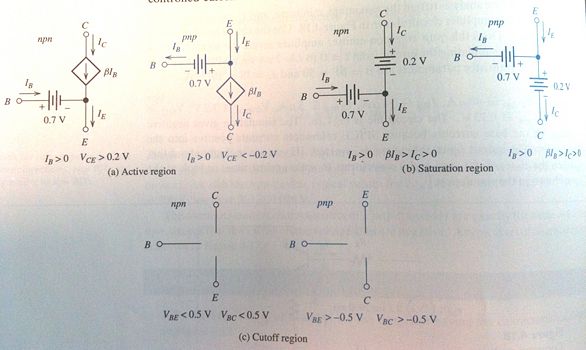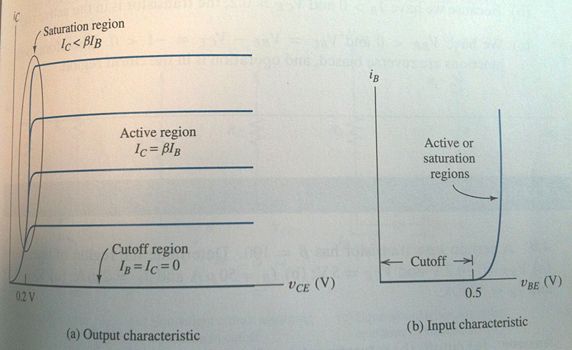Chapter 4: Difference between revisions
Jump to navigation
Jump to search
No edit summary |
|||
| Line 51: | Line 51: | ||
|} |
|} |
||
*What are the Saturation, Reverse Active and Cutoff regions used for? |
|||
*Why do we always seem to use a common emitter configuration? |
*Why do we always seem to use a common emitter configuration? Common-base and common-collector have different properties. |
||
*Daisy chaining the voltage doubler? Go up? |
|||
*What does the Reverse Active large-signal model look like? How about graphically? |
|||
*For P3.17 make the glob of sauder assuming they're all on and check the currents running through each one. Make sure they go the right way, and add up? |
|||
*For the Saturation region, why is 0.2V the magic number for V_CE? |
|||
Revision as of 12:06, 3 March 2010
Bipolar Junction Transistor
- NPN: Not Pointing iN
- PNP: Pointing iN Please
- The arrow is for the emitter current.
- For an NPN the current flows into the collector. For a PNP the current flows out of the collector.
How a BJT works
Large-Signal DC models
|
|
- Active: The normal mode of operation. This mode has the largest common-emitter current gain.
- Reverse Active: The collector and emitter roles are reversed. Most BJTs are not symmetrical, thus and take on different values.
- Saturation: High current from the emitter to collector. Logical "on".
- Cutoff: Very little current flow. Logical "off".
Large-Signal DC Analysis
- Assume an operating region for the BJT.
- Solve the circuit to find
- Check the values to see if they match the region constraints.
- Why do we always seem to use a common emitter configuration? Common-base and common-collector have different properties.
- Daisy chaining the voltage doubler? Go up?
- For P3.17 make the glob of sauder assuming they're all on and check the currents running through each one. Make sure they go the right way, and add up?












